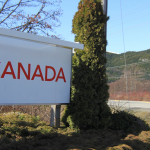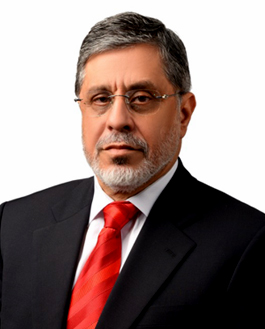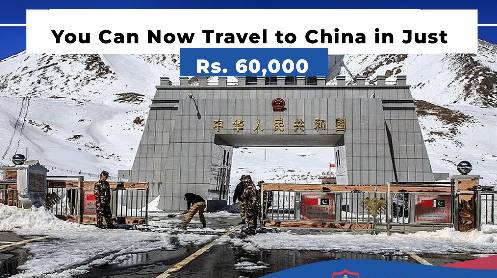The exodus of international partners and the global gas glut raise doubts about the economic viability of an already challenged sector
Canada was hoping to catch the mid-2020s next global LNG export wave in a big way when a Shell-led consortium announced FID for the first phase of the massive LNG Canada project in October 2018.
The nascent Canadian LNG industry plans to produce the “cleanest” gas in the world, given the country’s abundant and cheap hydropower and world-leading regulatory and corporate efforts to mitigate methane emissions. But this may not be enough to attract investors.
Proposed LNG projects in Canada tend to have relatively high capital and transportation costs. The regulatory regime is also costly and time-consuming to navigate—and will become even more so following legislation passed by the federal government last June. The possibility of legal challenges, protests and civil disobedience after projects have been approved could also delay work and drive up costs.
Stumbling start
A large number of new liquefaction projects have been sanctioned around the world since October 2018. But LNG Canada is the only Canadian project on the list, with international oil companies (IOCs) and institutional investors continuing to abandon Canadian projects.
The global gas glut, recently made worse by the fall in demand caused by the Covid-19 pandemic, is casting a pall over the sanctioning of new LNG projects around the world—with low-cost and strategically located Qatar a notable exception.
he most likely source of positive FIDs in Canada may now come from domestic promoters such as Rockies LNG Partners, a consortium of western Canadian gas producers, and Calgary-based Pembina Pipeline, with financial backing coming potentially from the federal and provincial governments. This shift from foreign to domestic companies and capital is reminiscent of the ‘Canadianisation’ of Alberta’s oil sands industry since the middle of last decade.
LNG Canada
The C$40bn ($29.8bn) LNG Canada project is the largest private sector and natural resource investment in Canadian history. Two trains initially will have a combined export capacity of 14mn t/yr and pipe gas from the British Columbia (BC) coast. Until recently, it was a relatively non-controversial project and a model for engagement with indigenous peoples.
Calgary based TC Energy had garnered approval from the elected band councils of all 20 First Nations for the construction of a 670-km pipeline from the Dawson Creek area of northeastern BC to Kitimat on the northern coast. To do so, the company engaged in thousands of hours of talks with members of indigenous communities and agreed to provide C$600mn in impact benefits.
But the leadership of First Nations in BC tends to be somewhat tangled, as most groups never ceded control of their territory to Canada through treaties. So-called ‘treaty Indians’ have agreed to be governed by elected band councils under the Indian Act, whereas hereditary chiefs continue to hold sway in First Nations that have not signed treaties.
This leadership divide is no more particularly apparent than in the Wet’suwet’en First Nation. Opposition to construction of the pipeline by hereditary chiefs from the Unist’ot’en clan—including a blockade of its route for the past several years—has led to sympathy blockades of strategic railway crossings by other indigenous peoples across Canada since the first week of February.
These blockades have led to the largest obstruction of rail traffic in Canadian history and, along with the federal government’s relatively weak actions to end them, have further spooked potential investors in LNG and energy-related projects—both foreign and domestic alike.
Foreign exodus
Foreign companies and investors were abandoning Canadian LNG projects before LNG Canada was sanctioned and are still doing so. The three large-scale projects considered most likely to be next for approval are now in doubt (see Table 1). In the early 2010s, there were more than 20 LNG projects proposed for the BC coastline, plus another three for eastern Canada.
The most significant projects to be cancelled before Shell’s decision were ExxonMobil’s C$25bn West Coast Canada LNG project, Chinese state-owned Cnooc’s $28bn Aurora LNG project, and Malaysian firm Petronas’ $36bn Pacific NorthWest LNG projects—although Petronas has since acquired a smaller stake in LNG Canada.

The Chevron-led Kitimat LNG project, which includes the 471km Pacific Trail Pipeline (PTP), was widely expected to be the next Canadian project to be sanctioned. Approval seemed especially likely after the California-based major and Australia’s Woodside Petroleum, its 50-50 partner, filed an application on April 2019 to increase the project’s capacity to 18mn t/yr with a 40-year export licence. The original plan was for 10mn t/yr and 20 years.
But, in September, Woodside announced plans to scale back its working interest in Kitimat to 20-40pc, and in December Chevron announced plans to divest its entire 50pc interest in the project. “The Kitimat LNG project decision is part of Chevron’s global portfolio optimisation effort focused on improving returns and driving value,” the company said in a statement. Chevron subsequently took a $1.6bn write-down on the project, while Woodside took a $720mn charge.
The future of Canadian firm GNL Quebec’s C$14bn Energie Saguenay project was thrown into doubt when Warren Buffett’s Berkshire Hathaway pulled C$4bn of funding in early March. The political situation in Canada is widely cited as the reason for the company’s decision, with the railway blockades apparently the final straw. The project scope includes a 780km pipeline to connect an 11mn t/yr liquefaction plant to TC Energy’s natural gas mainline to source cheap western Canadian gas
Although Berkshire Hathaway had yet to formally announce its strategic funding for Energie Saguenay, GNL Quebec and Quebec-based Gazoduq, the company planning to build and operate the C$4.5bn connector pipeline, had both been hiring extra staff, suggesting relative certainty in obtaining the investment. The two companies had been targeting a 2025 start-up date for the liquefaction plant and pipeline, a similar timeline to LNG Canada.
Demand doubts
The EU’s pledge to achieve “climate neutrality” by 2050 also has the potential to disrupt a significant proportion of the funding for Calgary-based Pieridae Energy’s C$10bn Goldboro LNG project in Nova Scotia, on the east coast of Canada. Much like Energie Saguenay, this project also is planning to use underutilised pipeline capacity to source primarily western Canadian gas for export to Europe and possibly Asia.
The German government had previously confirmed its support for Goldboro, declaring it eligible in principle for up to US$4.5bn in loan guarantees. In July 2019, Pieridae negotiated extensions to key deadlines for its 5mn t/yr, 20-year contract with German utility Uniper. The 5 mn t/yr volume would be equivalent to the entire production capacity of Goldboro’s first two trains. Under this agreement, Pieridae must make a positive FID for the first train by 30 September of this year, with commercial gas deliveries to begin no later than 31 May 2025.
Last year, the European Commission included 32 gas-related projects on a list of energy projects eligible to receive EU funding to support the continent’s energy transition. But based on recent comments by European politicians—including EU energy commissioner Kadri Simson—while projects that improve gas connectivity on the continent will likely receive EU funding in the future given concerns about the security of Russian gas, long-life LNG regasification projects likely will not.
This could affect the German government’s decision to provide loan guarantees to the Goldboro project.
Domestic promoters
As the exit of IOCs and institutional investors continues, domestic players Pembina Pipeline and Rockies LNG Partners have stepped up plans to build LNG liquefaction plants on the BC coastline. At the end of February, Pembina Pipeline, which has been attempting to obtain US federal regulatory approval for its Jordan Cove LNG project on the Oregon coast, indicated it is now actively seeking a BC-based project as well.
“We are looking at a bunch of locations in BC,” Pembina Pipeline president and CEO Mick Dilger said during the company’s latest earnings call.
Dilger did not specifically say whether the company was planning to develop a new project on the BC coast or invest in an existing one. But the timeline he gave for the development, ranging from mid- to end-of-decade, suggests either is an option.
Rockies LNG partners was formed in February 2019 by a group of mid-size gas producers headquartered in Calgary who are looking for economic prices and new markets for their output as a result of the US shale gas revolution. The consortium has also not explicitly indicated whether it is planning to invest in an existing project or develop a new one.
Rockies LNG president Greg Kist was previously the president of Petronas’ shelved Pacific NorthWest LNG project.
Government support
Neither the federal government nor any provincial authorities have indicated plans to financially support Canada’s nascent LNG industry, but their help may be required. The federal government and the province of Alberta are the most likely candidates, partly due to their relatively strong balance sheets and partly out of need.
The Canadian economy has been sputtering since Prime Minister Justin Trudeau and the Liberal Party gained power in October 2015, with the two key engines of economic growth, manufacturing and natural resources, in increasing distress. The Trudeau government has generally been perceived as supportive of the country’s “clean” LNG export industry—Trudeau was seated next to BC Premier John Horgan when the LNG Canada FID was signed. Financial support for one or more LNG projects could help kickstart the country’s faltering economy.
The Trudeau government bought the 300,000bl/d Trans Mountain crude pipeline outright for C$4.5bn from US midstreamer Kinder Morgan in August 2018 to keep its 590,000bl/d expansion project alive, despite the government’s policies on the whole being viewed as highly detrimental to western Canada’s ‘dirty’ oil industry.
Alberta is the most likely province to financially support an LNG liquefaction project, despite it not benefiting directly from construction spending on such a project. Alberta still accounts for roughly two-thirds of Canadian gas production—compared to one-third for BC—but producers are in desperate need of new customers and higher prices. In contrast, the US west coast market for BC gas has remained relatively insulated from the US shale gas revolution, while the first phase of LNG Canada is planning to source all of its gas from BC.
On 24 February, in response to the latest oil price war, Alberta Premier Jason Kenney said his pro-business conservative government would consider investing directly in Alberta’s oil and gas industry. In addition, in June, shortly after taking power, the Kenney government announced the creation of the Indigenous Opportunities Corporation. This will award C$1bn in loan guarantees to indigenous groups that want to invest in the energy sector.





